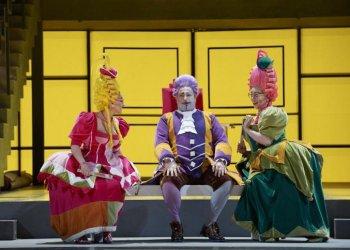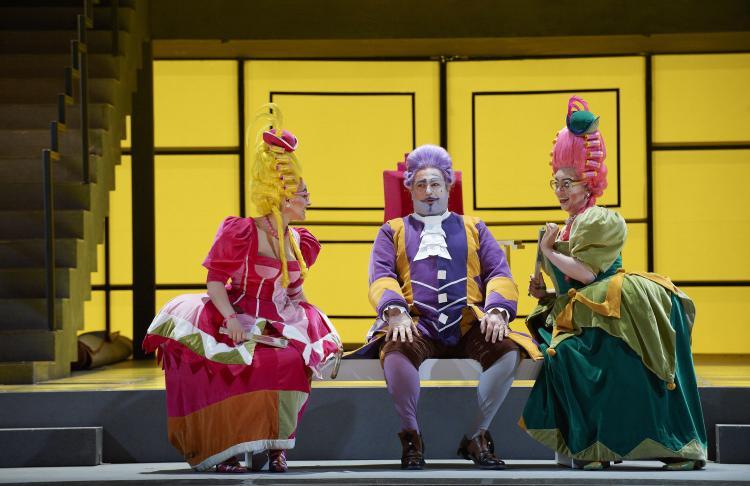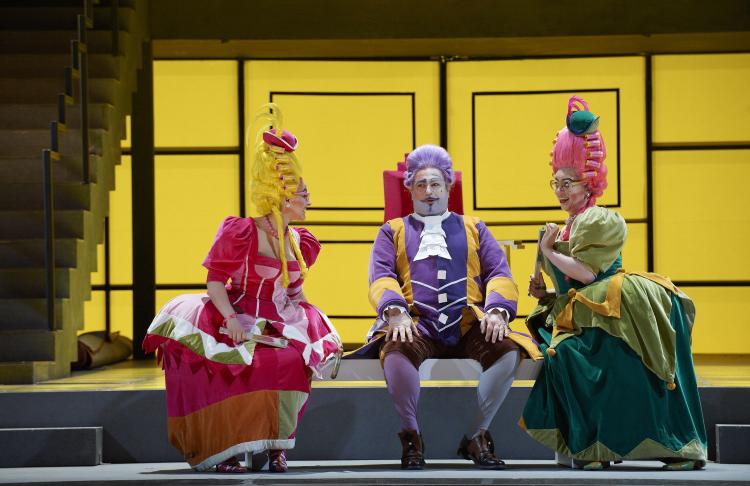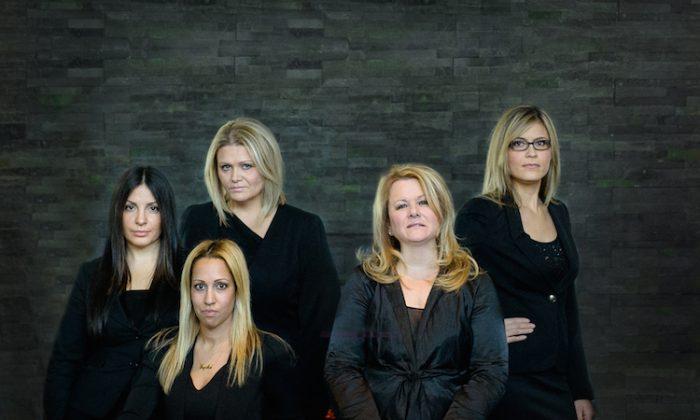What a privilege it is to go to the opera. There is no feeling like it. Each musician from the pit to the stage has more years of training than a doctor or a lawyer. They work together, generally harmoniously and with incredible precision, to create two or more beautiful hours of music. Sometimes the experience succeeds because of the greatness of a composer and the talent of the musicians, who are gifted enough to perform the work—sometimes in spite of other factors. This was the case for the Canadian Opera Company’s latest offering.
La Cenerentola (Cinderella) by Rossini has an excellent libretto written by Giacomo Ferretti, who scavenges the plot and details from a number of French and Italian sources, piecing together a very funny, though decidedly magic-less Cinderella. You know the plot already, but this time a sorcerer replaces a fairy godmother and an evil stepfather provides the necessary villainy. The evil stepsisters and the prince are necessarily kept. This particular production also boasts a preponderance of mice that keep accidentally upstaging everyone. If you have a phobia, stay away.
As is the trend with opera these days, sets are ugly and costumes worse. The mix between Alice in Wonderland and…well it was pretty much Alice in Wonderland all the way, the grey of the set a bit more on the Tim Burton side of Disney. Joan Guillén’s design lacked coherence and the assortment of ideas left too few well executed. The high point has to be the wicked stepsisters’ dresses, the low point Prince Ramiro’s costume and tiny carriage.
Thankfully, director Joan Font’s adept treatment of the comedic material wasted none of the popular appeal La Cenerentola has. There is plenty of physicality and movement, and the characters are in the right place at the right time. This doesn’t always happen at the opera, as you may know.
The comical characters are central to this opera, and especially to this production, since their bellowing was most easily heard over the wall of sound the singers were drowning in due to the uncovered orchestra pit at the Four Season’s Centre.
This acoustical problem is even more noticeable in works like Rossini’s, whose vocal lines are virtuosic and ornate, requiring limber, lyrical voices. For the most part the human voice trades volume for agility. What this means to the audience is that the type of voice required to perform the many beautiful and rapid passages Rossini wrote will be lost in a hall where the orchestra can’t help but be too loud—no matter how admirably conductor Leonardo Vordoni may have tried to keep it quiet.
Rossini puts space in the orchestral accompaniment for singers, which provided opportunities to appreciate the exceptional voice of Elizabeth DeShong. She was the stand-out singer in this production as Angelina (Cenerentola), which is as it should be.
I don’t think there are many lyric contraltos kicking around, and DeShong has such clean intonation and delivery, a good balanced sound from the top to the bottom of her voice, and lovely rhythmical phrasing. Her voice is very bright and feminine for a mezzo, and extremely limber.
Lawrence Brownlee (Don Ramiro a.k.a. Prince Charming) also gave a fine performance—when I could hear him. Like many Prince Charming type roles, there is not too much meat in it but that aside, Brownlee should stop taking acting lessons at the skating rink and spend a summer reciting Shakespeare and crying on cue sometime soon. Still, we will forgive him because he has a sparkling voice with a clear, gorgeous and totally unforced top end that is quite remarkable. Charming indeed, and he killed in the second act, which according to Maria Callas is the way to do it.
Donato DiStefano, made a huge contribution as Don Magnifico. He is made for Italian comic opera. His limber facial expressions and glorious drunken bluster are irresistible. He is burly, unpretentious, and altogether likeable, taking up plenty of space with his big warm presence. It was a wise move on the part of the COC to find him. With a cast full of young singers, DiStefano is the glue that held the evening together.
Brett Polegato was an oily and altogether entertaining Dandini, but vocally inconsistent, being pitchy and tending to shout more than sing at times. Kyle Ketelsen was a rather uninteresting and cold Alidoro. Rihab Chaieb and Ileana Montalbetti were passable wicked step-sisters, when they could be heard. Actually, I am really only sure I could hear Montalbetti. I have yet to find a flaw with the COC chorus; under the direction of Sandra Horst they never disappoint.
All in all, a great night out if you are not too picky.








Friends Read Free